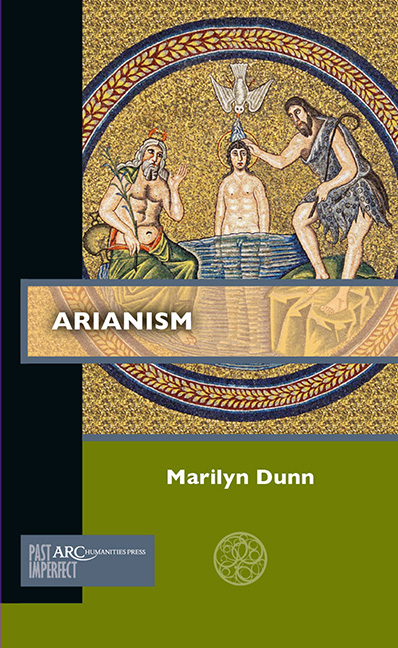Chapter 4 - Barbarian Homoianism in the Fifth and Sixth Centuries
Published online by Cambridge University Press: 18 June 2021
Summary
Homoian Christianity was part of the fabric of the barbarian kingdoms that emerged inside the western Roman Empire in the fifth century. For ambitious rulers of these kingdoms, however, it also developed significant disadvantages. Initially, it tied Vandal, Sueve, and Burgundian leaders into external alliances with the Aquitanian Visigoths. When the Aquitanian state vanished, Homoianism upheld the network of alliances that Theoderic the Great attempted to create with the Visigoths, Burgundians, and Thuringians – though he may have found himself the junior partner to the Vandals under Thrasamund. Viewed in a wider perspective, Homoianism could be an impediment to becoming major players in world of the Roman Empire. At home, it meant that rulers did not have a fully functioning relationship with their Nicene bishops, who occupied positions of major influence in the indigenous communities, even if they were on relatively good terms with them. Many rulers looked outwards from the microcosm of the religion and politics of the Homoian world, aspiring to enter the macrocosm of the Roman Empire irrespective of the fall of its western half in 476 and the shift of focus to the East Roman Empire with its capital in Constantinople. But a move too far in the direction of Romanitas or of the Nicene Church could appear as a potential threat to their warrior class for whom Homoianism was interlinked with the fundamentals of military service, reward, and landholding. So Homoian Christianity was not to be easily shaken off and aspiring rulers could find themselves forced to demonstrate their commitment to it as a sign of their reciprocal relationship with their élites. This chapter investigates the way these dynamics played out in the individual Homoian kingdoms.
Visigothic Aquitaine
The Visigothic rulers of Aquitaine show fewest signs of aspirations to Romanitas. As a result of their leading role in ending the advance of the Huns in 451, they were major players in western Europe and used Homoianism to help establish hegemony over the Burgundes and Sueves. Euric (466–84) was able to take advantage of the weakness of the western emperors to acquire most of southern Gaul and extend his rule into Spain. But this period also saw the murder of two rulers by their successors and expeditions into Spain were headed by prominent members of the military élite.
- Type
- Chapter
- Information
- Arianism , pp. 79 - 102Publisher: Amsterdam University PressPrint publication year: 2021



